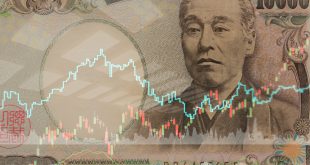Risky assets retreated following Friday’s inflation report, with bitcoin losing about $762.36 to trade below $23,190.00, within a few dollars of its lowest level of this week. Nasdaq 100 futures were down 1.9%, and S&P 500 futures are lower by 1.4%. The January PCE Price Index unexpectedly rose to 5.4% on Friday’s release. Bets about the Fed’s next move hiking its fed-funds rate by 50 basis points in March are accelerating after the PCE Price Index showed the disinflation trend reversed in January.
Geopolitical Factors
The week marked the first anniversary of war in East Europe as the White House announced its policy on “Imposing extensive sanctions on Russia’s economy”. On Friday, in coordination with G7 partners and allies, the US Departments of the Treasury and State announced implementation of “sweeping sanctions against key revenue generating sectors in order to further degrade Russia’s economy and diminish its ability to wage war against Ukraine”.
The fresh Washington-led sanctions are targeting Russian financial institutions and Russian officials. Arrangements also include the targeting “Russia’s future energy capabilities in a manner that does not impact current production to minimize market disruption. The United States also is expanding its sanctions authorities to Russia’s metals and mining sector, tailored to minimize market disruption”.
Oil edged higher in the volatile US trading session on Friday. For the week, oil was flat as crude prices are boosted by expectations of lower Russian exports. WTI was seemingly pressured by rising US inventories as well as concerns over global economic activity.
Gold
The US dollar and yields rise further after Friday’s US economic data. US Core PCE rose above expectations in January. Gold reacted by hitting fresh weekly lows near $1,810. Gold prices dropped further after the beginning of the US trading session amid a stronger US dollar and higher Treasury bond yields following data that showed the core PCE rose at the highest rate in six months, above expectations.
The Gold Index bottomed at $1,809 per ounce, the lowest level since December 29. It is hovering around the lows, looking at the $1,800 area. The 20-week Simple Moving Average awaits at $1,797. Bulls need to recover the $1,820 area in order to alleviate the bearish pressure. At the time of writing gold is trading below $1812, namely at $1811.70 per ounce.
The downside extended following the January Personal Income and Spending. The numbers came in above expectations. Market participants looked into inflation numbers. The Federal Reserve’s preferred inflation gauge, the core PCE rose by 0.6%, to an annual rate of 4.7%, up from the 4.6% of December and against expectations of a decline.
The dollar gained momentum after the economic numbers, US yields, so far, and equity prices tumbled. The context added pressure to gold that is fighting to hold above $1,810. The 2-year Treasury yield is at 4.79%, the highest since November and the 10-year is at 3.93%.
The Dollar, Interest Rate “Higher for Longer” Prospects
The dollar held seven-week high on Friday following data showing still-high inflation reinforced expectations that interest rates could stay “higher for longer”. Hotter-than-expected data has supported the dollar against major peers this week, sending the dollar index up 0.6% at 105.20 to a seven-week high and putting it on track to post its largest weekly gain since late September. The euro was also on pace to post its biggest weekly loss against the dollar since late September.
Against the yen, the dollar hit a two-month high and was last up 1.3% at 136.41 yen. The US currency also rose to its strongest level in seven weeks versus the Swiss franc following the data. The dollar last traded at 0.9406 francs, up 0.7%. The euro was last down 0.39% against the dollar at $1.0549, after falling to a seven-week low of $1.0536 earlier in the session. Sterling softened 0.60% against the dollar at $1.1951.
What Clues Could US Data Reveal?
The dollar also benefited from the personal consumption expenditures (PCE) price index, tracked by the Fed for monetary policy, which rose 0.6% last month after gaining 0.2% in December. The PCE price index accelerated 5.4% in the 12 months through January, after rising 5.3% in December.
Consumer spending, which accounts for more than two-thirds of US economic activity, jumped 1.8% last month, according to the Commerce Department. December’s data was revised higher to show spending dipping 0.1% instead of falling 0.2% as previously reported. Moreover, sales of new US single-family homes increased 7.2% in January, the highest level since March 2022. December’s sales pace was revised higher to 625,000 units from the previously reported 616,000.
Strong US data turned the market in February. Good news has been bad news, with rates and equities selling off and the US dollar up. The US economy seems to be re-accelerating, forcing the Fed to hike more, in a market that was hoping for early Fed easing. On the other hand; unemployment is historically low in every G10 economy and has to increase in any of them during monetary policy tightening so far.
Fed funds futures traders are now pricing the Fed funds rate to hit a peak of 5.395% in September, and expect it to stay above 5% for the year, compared with the current target rate of 4.5-4.75%. The markets have also priced in rate hikes over the next three meetings.
US consumer confidence rose Friday, according to the index released by the University of Michigan. The index rose to 67 points in February, compared to the preliminary reading recorded earlier at 66.4 points, which is the same number indicated by market expectations.
US growth readings rose, with the US Gross Domestic Product index advancing by 2.7% in the fourth quarter of last year, which was lower than the 2.9% rise recorded in the third quarter of 2022 and lower than market expectations, which suggested that the actual reading would not change.
The US GDP price index for the fourth quarter of 2022 rose by 3.9%, compared to the previous reading and expectations, which indicated 3.5%.
FOMC Meeting Minutes
Last week’s Fed meeting minutes fueled expectations regarding raising interest rates at a faster pace or a greater amount in the coming meeting(s). The minutes signaled that all Fed policymakers agreed that there is still a need for further rate hikes “to achieve the objectives of the Federal Open Market Committee in terms of jobs and inflation.” According to the minutes, quantitative tightening is needed for the Fed to ensure that inflation eases towards 2.00%, which is expected to take some time, according to results released Wednesday.
 Noor Trends News, Technical Analysis, Educational Tools and Recommendations
Noor Trends News, Technical Analysis, Educational Tools and Recommendations





